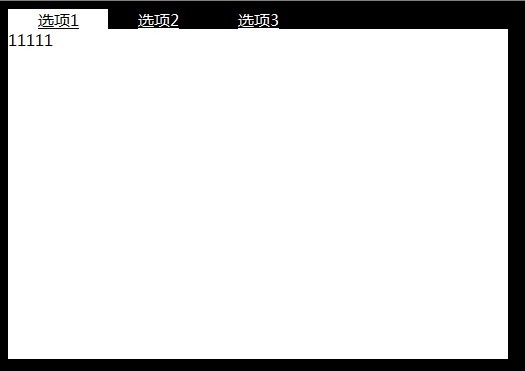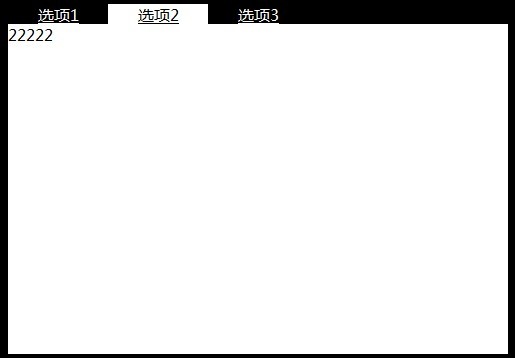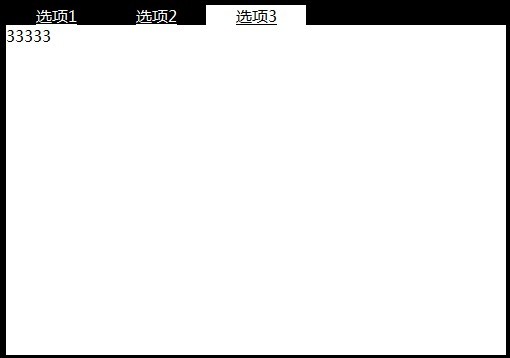Tutorial on developing jQuery plug-ins yourself_jquery
Because of my work needs, I have been thinking about the development of jQuery plug-ins these days. After a day of hard work, I finally completed the first jQuery plug-in I made. For someone like me who has a headache when seeing CSS, it only takes one day. 8 hours, a conservative estimate of 5 hours spent working on CSS (I am css illiterate, which is not an adequate description. If an illiterate person cannot write but can only speak, then I am at a level where I cannot even speak.), good Okay, stop talking nonsense and get to the point.
First of all, you must understand that there are two types of jQuery plug-in development, 1. Class-level plug-in development. 2. Object level plug-in development.
What? You actually ask what is the class level and what is the object level?
You can understand the class level as extending the jquery class, the simplest $.post(... );
The object level can be understood as object-based expansion, such as $("#Me").fuck(...); The fuck here is an object-based expansion. That's all. If you want to go deeper, please spend RMB to buy a book or check the information online. The book explains it more clearly than I can. so...Next...
As for what you want to write? It is the turn of the class-level and object-level styling mentioned above to come on stage, because there are all kinds of strange and strange writing methods in the world. Each has its own merits, and the writing standards are not uniform. I wrote it according to the method that I think is the easiest, Hava a Look!
Class level writing: jQuery.plugin name=function(){....};
Calling method: $.plugin name();
I won’t mention things like exposed parameters for now. Step by step...
The thing above is a pop-up dialog plug-in. So, it is important to understand first, what is a plug-in, what is a class-level plug-in? Let’s take a look at the effect of page startup. The truth in the picture above , you know..

(function($) {
$.fn.pluginName = function() {
// Code area.
};
})(jQuery);
Object level writing: $.fn.Plug-in name = function(){}; There is one more fn, yes, it is fn! fn!!! fn!!!
Calling method: $("#Me").Plug-in name();
To put it briefly, $.Plug-in name(); is accessed through $ to call the global function in jquery, which can be directly passed jquery or $$ call to achieve some effects.
$("#Me").Plug-in name(); is a function called through a jquery object. What? You actually found that there is an extra layer outside this writing method? Ah? You asked What's going on?
The First, we must first understand the shape (framework) of the closure thing. Look!, this is the legendary stuff used to develop jQuery plug-ins
(function($){
//Here is what you write Dongdong places do not collect local tax, industrial and commercial tax, personal income tax, etc. Feel free to use it
}) (jQuery);
(function($){ // This is a place for you to write stuff. There is no local tax, industrial and commercial tax, personal income tax, etc. Feel free to use it })(jQuery);
The $ parameter after function, the formal parameter, is in the function body. For internal use, $ is the object you are currently calling the function on, so you can do a lot of things... you know.
Use a tabs panel switching plug-in to demonstrate the specific development of jQuery object-level plug-in in detail, and directly enter the code.
First enter the HTML:
再上插件源码:
/*
tabs面板插件,版本1.0(2011.08.24)
用法:$("#myDiv").tabs({switchingMode:"click"});
参数解释:switchingMode是面板切换的模式,如switchingMode:"mouseover"则鼠标移动至选项卡切换面板,默认为click。
整体tabs骨架不变,依然是常用的结构如下:
样式:此样式为默认无任何效果样式,可根据需要修改插件样式。
*/
; (function ($) {
$.fn.tabs = function (options) {
var defualts = { switchingMode: "click" };
var opts = $.extend({}, defualts, options);
var obj = $(this);
var clickIndex = 0;
obj.addClass("tabsDiv");
$("ul li:first", obj).addClass("tabsSeletedLi");
$("ul li", obj).not(":first").addClass("tabsUnSeletedLi");
$("div", obj).not(":first").hide();
$("ul li", obj).bind(opts.switchingMode, function () {
if (clickIndex != $("ul li", obj).index($(this))) {
clickIndex = $("ul li", obj).index($(this));
$(".tabsSeletedLi", obj).removeClass("tabsSeletedLi").addClass("tabsUnSeletedLi");
$(this).removeClass("tabsUnSeletedLi").addClass("tabsSeletedLi");
var divid = $("a", $(this)).attr("href").substr(1);
$("div", obj).hide();
$("#" divid, obj).show();
};
});
};
})(jQuery);
接下来上插件样式:
body{background-color: black;}
.tabsDiv{width: 500px;height: 350px;margin-top: 0px;margin-left: 0px;}
.tabsDiv ul{width: 500px;height: 20px;list-style: none;background-color: black;margin-bottom: 0px;margin: 0px;padding: 0px;}
.tabsDiv div{width: 500px;height: 330px;background-color: white;}
.tabsSeletedLi{width: 100px;height: 20px;background-color: white;float: left;text-align: center;}
.tabsSeletedLi a{width: 100px;height: 20px;color: black;}
.tabsUnSeletedLi{width: 100px;height: 20px;background-color: black;float: left;text-align: center;}
.tabsUnSeletedLi a{width: 100px;height: 20px;color: white;}
Final renderings, you know:




Hot AI Tools

Undresser.AI Undress
AI-powered app for creating realistic nude photos

AI Clothes Remover
Online AI tool for removing clothes from photos.

Undress AI Tool
Undress images for free

Clothoff.io
AI clothes remover

AI Hentai Generator
Generate AI Hentai for free.

Hot Article

Hot Tools

Notepad++7.3.1
Easy-to-use and free code editor

SublimeText3 Chinese version
Chinese version, very easy to use

Zend Studio 13.0.1
Powerful PHP integrated development environment

Dreamweaver CS6
Visual web development tools

SublimeText3 Mac version
God-level code editing software (SublimeText3)

Hot Topics
 Replace String Characters in JavaScript
Mar 11, 2025 am 12:07 AM
Replace String Characters in JavaScript
Mar 11, 2025 am 12:07 AM
Detailed explanation of JavaScript string replacement method and FAQ This article will explore two ways to replace string characters in JavaScript: internal JavaScript code and internal HTML for web pages. Replace string inside JavaScript code The most direct way is to use the replace() method: str = str.replace("find","replace"); This method replaces only the first match. To replace all matches, use a regular expression and add the global flag g: str = str.replace(/fi
 Custom Google Search API Setup Tutorial
Mar 04, 2025 am 01:06 AM
Custom Google Search API Setup Tutorial
Mar 04, 2025 am 01:06 AM
This tutorial shows you how to integrate a custom Google Search API into your blog or website, offering a more refined search experience than standard WordPress theme search functions. It's surprisingly easy! You'll be able to restrict searches to y
 8 Stunning jQuery Page Layout Plugins
Mar 06, 2025 am 12:48 AM
8 Stunning jQuery Page Layout Plugins
Mar 06, 2025 am 12:48 AM
Leverage jQuery for Effortless Web Page Layouts: 8 Essential Plugins jQuery simplifies web page layout significantly. This article highlights eight powerful jQuery plugins that streamline the process, particularly useful for manual website creation
 Build Your Own AJAX Web Applications
Mar 09, 2025 am 12:11 AM
Build Your Own AJAX Web Applications
Mar 09, 2025 am 12:11 AM
So here you are, ready to learn all about this thing called AJAX. But, what exactly is it? The term AJAX refers to a loose grouping of technologies that are used to create dynamic, interactive web content. The term AJAX, originally coined by Jesse J
 What is 'this' in JavaScript?
Mar 04, 2025 am 01:15 AM
What is 'this' in JavaScript?
Mar 04, 2025 am 01:15 AM
Core points This in JavaScript usually refers to an object that "owns" the method, but it depends on how the function is called. When there is no current object, this refers to the global object. In a web browser, it is represented by window. When calling a function, this maintains the global object; but when calling an object constructor or any of its methods, this refers to an instance of the object. You can change the context of this using methods such as call(), apply(), and bind(). These methods call the function using the given this value and parameters. JavaScript is an excellent programming language. A few years ago, this sentence was
 10 Mobile Cheat Sheets for Mobile Development
Mar 05, 2025 am 12:43 AM
10 Mobile Cheat Sheets for Mobile Development
Mar 05, 2025 am 12:43 AM
This post compiles helpful cheat sheets, reference guides, quick recipes, and code snippets for Android, Blackberry, and iPhone app development. No developer should be without them! Touch Gesture Reference Guide (PDF) A valuable resource for desig
 Improve Your jQuery Knowledge with the Source Viewer
Mar 05, 2025 am 12:54 AM
Improve Your jQuery Knowledge with the Source Viewer
Mar 05, 2025 am 12:54 AM
jQuery is a great JavaScript framework. However, as with any library, sometimes it’s necessary to get under the hood to discover what’s going on. Perhaps it’s because you’re tracing a bug or are just curious about how jQuery achieves a particular UI
 How do I create and publish my own JavaScript libraries?
Mar 18, 2025 pm 03:12 PM
How do I create and publish my own JavaScript libraries?
Mar 18, 2025 pm 03:12 PM
Article discusses creating, publishing, and maintaining JavaScript libraries, focusing on planning, development, testing, documentation, and promotion strategies.






